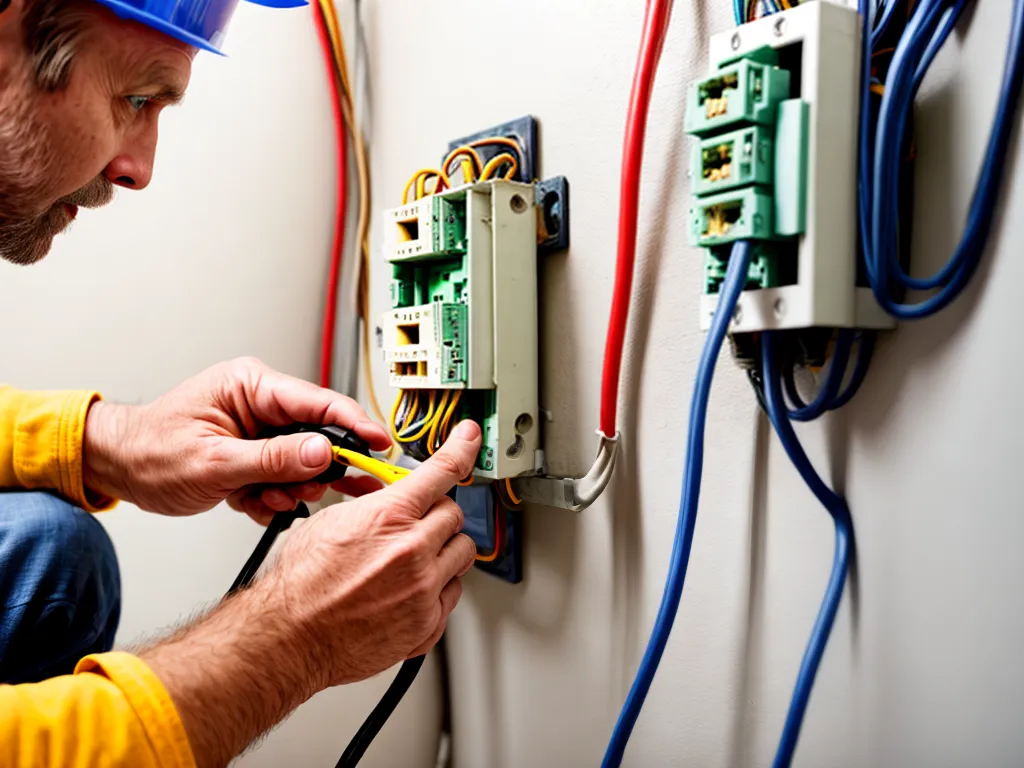
Installing electrical wiring in your home can be a satisfying DIY project that saves money compared to hiring an electrician. However, working with electricity also comes with risks like electrocution, fires, and damaged wiring if not done properly. Follow this guide to learn how to safely install home electrical wiring by yourself.
Research Electrical Codes and Permits
The first step is understanding your local jurisdiction's electrical code and permit requirements. Electrical codes provide safety standards to follow when installing wiring. Common codes include:
-
National Electrical Code (NEC) - Published by NFPA, the NEC is adopted fully or partially in most US states.
-
International Residential Code (IRC) - Provides standards for residential buildings. Often requires following the NEC.
-
Local city and county codes - Municipalities often have their own amendments on top of the NEC and IRC.
Electrical permits are typically required for wiring projects beyond basic routine maintenance. Research your local permitting rules and consult with the building department early in your planning. Permits ensure your plans meet code and allow inspections.
Draw Up Wiring Diagrams
Next, draw wiring diagrams detailing all the new circuits you plan to install. Include:
-
Locations of the power source, circuits, outlets, switches, lights, appliances, etc.
-
Circuit breaker panel schedule showing what each circuit breaker controls.
-
Wire types, sizes, and circuit ratings.
-
Safety features like GFCI outlets.
Thorough diagrams are crucial for staying organized during the physical install. They also provide the documentation inspectors will look for when pulling permits.
Gather the Right Electrical Supplies
With diagrams finished, compile all the necessary electrical supplies. You will need:
-
Wire - Use the appropriate wire gauge rated for each circuit. Common sizes are 14 AWG and 12 AWG. NEC Chapter 3 covers wiring requirements.
-
Conduit - Protect wires by running them through conduit. EMT and PVC are common conduit types.
-
Circuit breakers - Use code-approved circuit breakers matched to your wire gauge. Choose GFCI and AFCI breakers where required.
-
Outlets and switches - Use specification grade residential grade receptacles and switches.
-
Safety gear - At a minimum, wear insulated gloves and eye protection.
Do not install any used supplies or those not approved for residential wiring.
Turn Off Power and Install New Wiring
With your diagrams and supplies ready, you can start the hands-on electrical work:
-
Turn off power at the main breaker panel. Use a contactless voltage tester to verify it is off.
-
Mount your new breakers and label the panel accordingly.
-
Run conduit and wiring from the panel to each new outlet and switch box location. Follow your wiring diagrams. Use safe wiring techniques like avoiding kinks and leaving enough slack.
-
Terminate the wires securely using wire nuts or screw terminals. Connect grounds and neutrals properly.
-
Mount the outlets, switches, and other fixtures. Make sure connections are tight.
-
Turn power back on and test operation of all circuits. Check for faults like loose connections.
Follow electrical best practices throughout the process, like not working alone. Get inspectors to review work before enclosing walls.
Perform Regular Electrical Maintenance
Even quality DIY electrical work requires ongoing maintenance:
-
Test GFCIs monthly - Use the test and reset buttons to confirm proper operation.
-
Check for hot outlets - Scan outlets with an infrared thermometer annually to catch loose connections.
-
Inspect wiring condition - Visually check for damage like cracked insulation whenever accessing wiring.
-
Address tripped breakers - Find and fix the underlying problem if any breaker trips. Do not just reset it.
-
Update outdated wiring - Hire an electrician if your wiring is dangerously outdated or deteriorated.
With research, vigilance, and regular safety checks, you can successfully install residential wiring that meets code and protects your home and family. But always call in an electrician for large complicated projects or when unsure about electrical work.